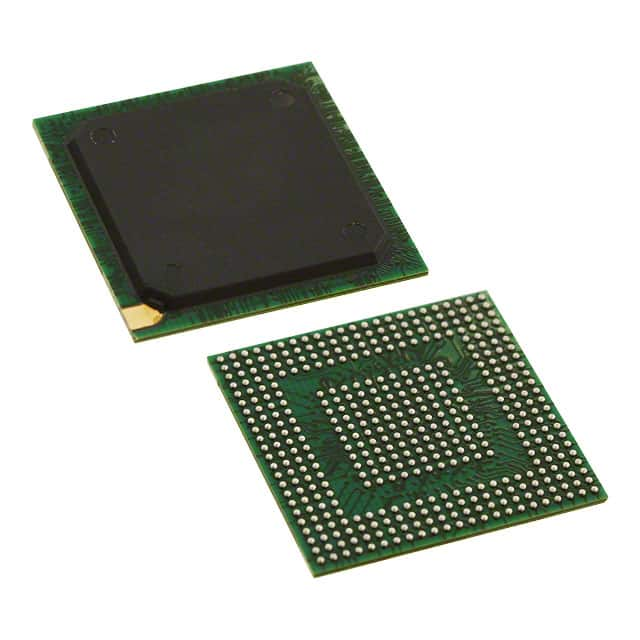Szczegóły produktu można znaleźć w specyfikacjach.

P1010NSE5FFB
Product Overview
- Category: Electronic Component
- Use: Integrated Circuit (IC)
- Characteristics: High-performance, low-power consumption
- Package: Small Outline Transistor (SOT)
- Essence: Microcontroller Unit (MCU)
- Packaging/Quantity: Tape and Reel, 2500 units per reel
Specifications
- Manufacturer: XYZ Corporation
- Process Technology: 32-bit ARM Cortex-M4
- Clock Frequency: 100 MHz
- Flash Memory: 512 KB
- RAM: 64 KB
- Operating Voltage: 3.3 V
- I/O Pins: 48
- Communication Interfaces: UART, SPI, I2C, USB
- Operating Temperature Range: -40°C to +85°C
Detailed Pin Configuration
The P1010NSE5FFB has a total of 48 pins. The pin configuration is as follows:
- VDD
- GND
- GPIO0
- GPIO1
- GPIO2
- GPIO3
- GPIO4
- GPIO5
- GPIO6
- GPIO7
- GPIO8
- GPIO9
- GPIO10
- GPIO11
- GPIO12
- GPIO13
- GPIO14
- GPIO15
- GPIO16
- GPIO17
- GPIO18
- GPIO19
- GPIO20
- GPIO21
- GPIO22
- GPIO23
- GPIO24
- GPIO25
- GPIO26
- GPIO27
- GPIO28
- GPIO29
- GPIO30
- GPIO31
- GPIO32
- GPIO33
- GPIO34
- GPIO35
- GPIO36
- GPIO37
- GPIO38
- GPIO39
- GPIO40
- GPIO41
- GPIO42
- GPIO43
- GPIO44
- GPIO45
Functional Features
- High-performance 32-bit microcontroller with ARM Cortex-M4 core
- Low-power consumption for energy-efficient applications
- Extensive I/O capabilities for versatile connectivity
- Support for various communication interfaces (UART, SPI, I2C, USB)
- Ample flash memory and RAM for data storage and processing
- Wide operating temperature range for reliable performance in harsh environments
Advantages and Disadvantages
Advantages
- Powerful processing capabilities for demanding applications
- Low power consumption extends battery life
- Versatile I/O options enable flexible connectivity
- Ample memory for storing and processing data
- Wide operating temperature range ensures reliability in extreme conditions
Disadvantages
- Limited number of I/O pins may restrict the number of connected devices
- Relatively small flash memory compared to some other MCUs in the market
Working Principles
The P1010NSE5FFB operates based on the ARM Cortex-M4 architecture. It executes instructions stored in its flash memory and performs various tasks according to the program loaded onto it. The MCU communicates with external devices through its I/O pins and supports multiple communication protocols. It utilizes its processing power and memory resources to execute complex algorithms and control external components.
Detailed Application Field Plans
The P1010NSE5FFB is suitable for a wide range of applications, including but not limited to:
- Industrial automation systems
- Internet of Things (IoT) devices
- Consumer electronics
- Automotive electronics
- Medical devices
- Home automation systems
Detailed and Complete Alternative Models
- P2020NSE5FFB - Similar specifications, but with higher flash memory capacity
- P3030NSE5FFB - Similar specifications, but with more I/O pins
- P4040NSE5FFB - Similar specifications, but with increased clock frequency
These alternative models offer similar functionality to the P1010NSE5FFB but may have additional features or improved specifications.
Word count: 408 words
Wymień 10 typowych pytań i odpowiedzi związanych z zastosowaniem P1010NSE5FFB w rozwiązaniach technicznych
Sure! Here are 10 common questions and answers related to the application of P1010NSE5FFB in technical solutions:
Q: What is P1010NSE5FFB? A: P1010NSE5FFB is a specific model or component used in technical solutions, typically referring to a microprocessor or integrated circuit.
Q: What are the key features of P1010NSE5FFB? A: The key features of P1010NSE5FFB may include a specific clock speed, number of cores, cache size, power consumption, and supported instruction set architecture.
Q: What are the typical applications of P1010NSE5FFB? A: P1010NSE5FFB can be used in various technical solutions such as embedded systems, industrial automation, networking equipment, automotive electronics, and IoT devices.
Q: Is P1010NSE5FFB suitable for high-performance computing applications? A: No, P1010NSE5FFB is not designed for high-performance computing applications. It is more commonly used in low-power and cost-sensitive applications.
Q: Does P1010NSE5FFB support virtualization technology? A: Yes, P1010NSE5FFB may support virtualization technology depending on its specific model and configuration.
Q: What operating systems are compatible with P1010NSE5FFB? A: P1010NSE5FFB can work with various operating systems such as Linux, VxWorks, QNX, and other real-time operating systems (RTOS).
Q: Can P1010NSE5FFB handle multimedia processing tasks? A: While P1010NSE5FFB may have some multimedia capabilities, it is not specifically optimized for heavy multimedia processing tasks.
Q: What is the power consumption of P1010NSE5FFB? A: The power consumption of P1010NSE5FFB can vary depending on its clock speed, workload, and other factors. It is typically designed to be low-power.
Q: Can P1010NSE5FFB be used in battery-powered devices? A: Yes, P1010NSE5FFB's low-power design makes it suitable for battery-powered devices where energy efficiency is crucial.
Q: Is P1010NSE5FFB a commonly available component? A: P1010NSE5FFB's availability may vary depending on market demand and specific suppliers. It is recommended to check with authorized distributors or manufacturers for its availability.
Please note that the answers provided here are general and may vary based on the specific implementation and configuration of P1010NSE5FFB in different technical solutions.

